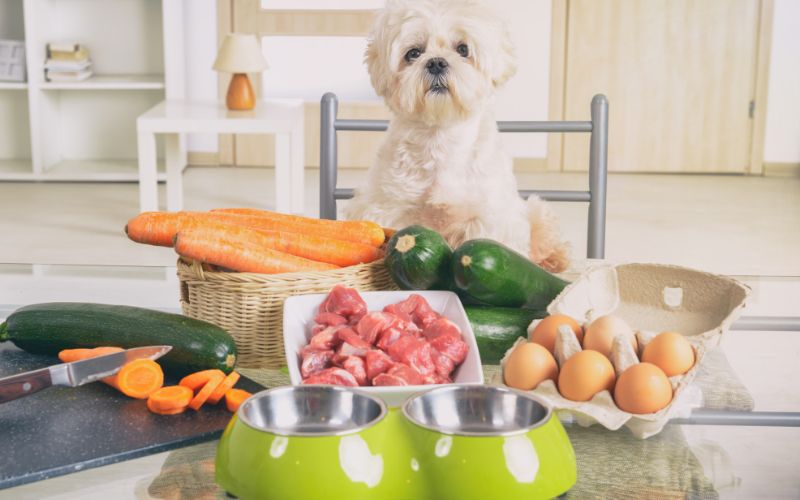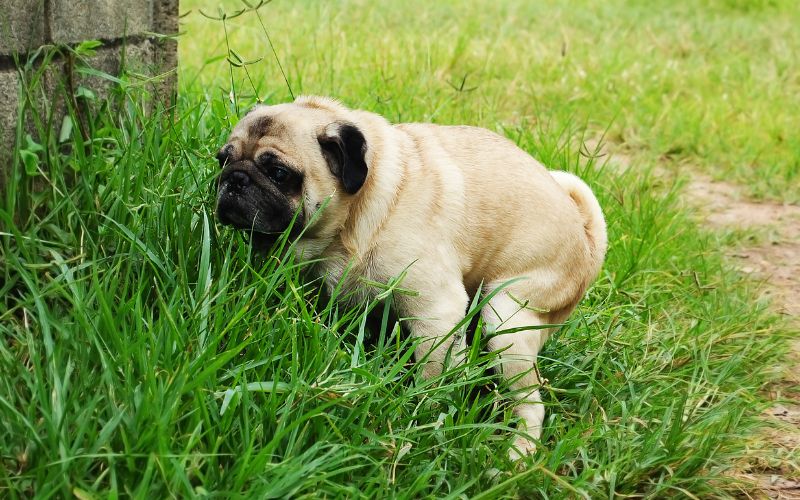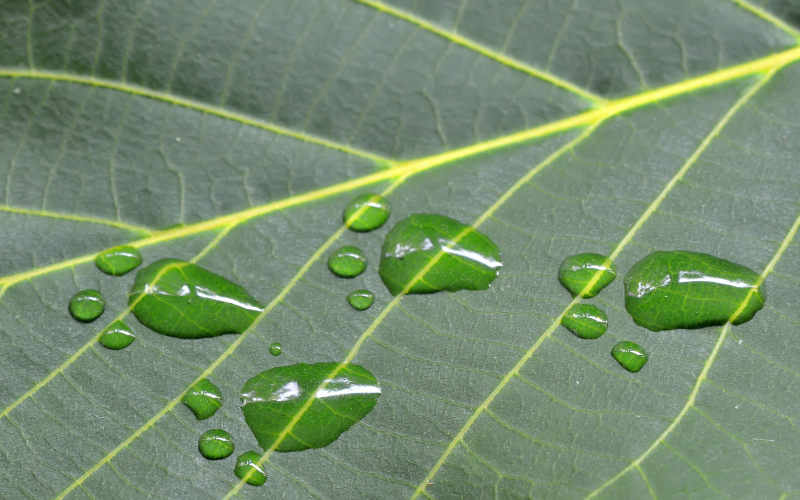The way to a dog’s heart is often through their stomach, and so when they are “off” their food it’s easy for us pet parents to quickly feel alarmed.
While this can be a sign of further physical or emotional issues - and if you are in any doubt always contact your vet - it is also possible that the reason for your doing being off their food is more straightforward…
Your dog has just gotten a little bored of their daily dinner!
Want to know what to do if your dog is bored of their food, learn how to tell if your dog is getting too much to eat, and how to tell if your dog is getting enough variety in their food?
Read on as we answer these questions and provide a few suggestions to fix this problem, so you can make your dog's dinner interesting again!
Question: My dog is bored of his dinner, what should I do?
Helen B: "My 11-year-old Cavalier appears to have become heartily sick of his dinner of (human grade) meat, including lamb, chicken, or beef, together with a holistic kibble, to which I add a spoonful of the Wellbeing mix. Any suggestions?"
Answer: Drop the kibble, double-check quantities, and add some variety into the mix.

Thank you for this question, Helen B. The first thing we would suggest is to reduce the amount of kibble you may be currently feeding your dog.
Commercial dog foods, whilst tailored for dogs and often an easy and accessible option for many dog owners, are not always the most appealing to your dog’s palette. Even the higher end, more holistic dog foods can be highly processed, and so our advice would be to try and incorporate as many real foods as possible into your dog’s diet instead.
Likewise, kibble can pose a potential long-term health risk to your canine companion.
Protein is a vital element of a dog’s diet, not only keeping them full and energised, but also contributing to muscle strength and maintenance. However, the protein in dried commercial dog foods is often highly processed and can be very hard on the kidneys - it has been found that older dogs fed a lifetime of dry kibble often develop kidney problems.
Equally, kibble is usually pretty calorie-dense, so dogs can get full on a small amount, as well as contributing to longer term health issues such as becoming overweight.
Not only will feeding your dog real food add some new tastes and textures, you can be assured that your dog is being fed proper nutritional foods from natural sources.
And why not go the extra mile and add in some Wellbeing Essentials to your dog’s meals, containing the micronutrients (vitamins and minerals) from wholefoods that they need or may be missing.
Our British cousins over at the Daily Mail even show how you can go full gourmet with your dog’s meals if you want to. Just note, this article mentions excluding avocado from your dog’s diet; however, avocado is okay for dogs as the only elements to avoid are the peel, leaves and pits - small amounts of the pulp or flesh are typically okay.
Likewise, many believe garlic is toxic to dogs, but there's actually lots of potential health benefits garlic can offer dogs when used in limited, carefully controlled quantities.
(We understand that some may be concerned about feeding their dog garlic, however studies show that a dog needs to eat a huge amount of garlic - ie about 30 grams per kilo, and each garlic bulb is about 3 - to see changes in bloods.)

Is your dog getting too much to eat?
Depending on a dog’s age, size and breed, they will require different portion sizes, and may even have different nutritional needs at each stage of their life. Dogs will need less calories as they age, as they will finish developing and will often become less mobile as they reach senior pup status.
One of the reasons why your dog may not be finishing their food is simply because they are full.
Yes, believe it or not, even a dog’s seemingly insatiable appetite has its limits. Dogs frequently become ‘fussy’ when, actually, they are just full to the brim!
Dogs will often go for the protein first, as they love their meat and so will wolf this down and leave the ‘less interesting’ bits such as vegetables. These contain a bunch of goodness for your dog, and so we want to make sure they are getting these in - portion control of the different food groups is the best way to go for doggy meal management.
Pro tip: dogs often prefer cooked veggies with their dinner and cooking can also aid the digestion of veg, so make sure to cook these through to make them more appealing for your pup.

Is your dog getting enough variety in their food?
Variety is the spice of life and just like humans, dogs crave variety in their food. This can be with ingredients, tastes, textures, styles, etc.
The way we personally manage this is to effectively feed our dogs the same food we are eating, as naturally us humans like to change up what we’re eating on a regular basis.
We work with the idea that our dogs are like little kids; in other words, their food will need to be much blander, so we adapt our meals to make simpler versions for our dogs. Being mindful of foods to avoid and keeping it simple is the jist of it.
For example, if we are having chicken stir fry with noodles, for our dogs we will use the same ingredients, with the vegetables more finely chopped, more cooked, and of course no chilli and onion! It rarely takes me more than a few minutes extra to prepare this.
Often when we batch cook (i.e. make up a few days or a week at a time), we make the same things every time, and that does get boring quickly - for both humans and canines.
So, to reiterate, extending your “human meals” to be dog-friendly is the easiest way to incorporate variety into your dog’s meals. It may take a few minutes more and include some extra planning, but once you get a system going you’ll find it’s incredibly easy.
And if you’re at all concerned that your dog may be missing vital nutrients through this switching around, why not try adding Wellbeing Essentials Complete 22 to their meals - the best way to optimise their nutrition consistently and effectively.

How to encourage your fussy dog to eat
We have put together a few handy tips to keep your dog’s meals interesting, as well as some further tricks and tips for dogs that are fussy eaters:
- Add yummy bits to your dog’s meals to make things more interesting - liver treats, a sprinkle of parmesan cheese, a little bit of butter, bacon bits; all of these will do the trick. Just a tiny amount makes a big difference.
- Alternate with wet casserole type foods and less moisture-dense foods, e.g. a yummy stir fry, to mix things up.
- Roast vegetables like pumpkin, sweet potato, carrots, parsnip are super sweet and delicious and may appeal to more fussy pups.
- Try noodles instead of rice, risoni instead of pasta, quinoa, millet, mashed potato, oats etc, for a little change in texture.
- Serving different proteins is also important as each has different amino acids, so beef, pork, chicken, lamb, turkey, fish, eggs, dairy. Adding liver, like chicken livers, to the dish can also make for a very compelling meal and is good for them too.
- Try to have some variety in how your dog’s food is prepared, like mince versus rare beef, meatballs instead of just mince…you get the idea!
- Bringing the meal to room temperature if it has been in the fridge enhances the aroma and teases the taste buds. Just pop it in the microwave for 30 seconds and you’re away - but make sure there are no hotspots for your pup to burn their tongues on.

In Conclusion
We hope this has shed some light on how to make your dog’s dinner more interesting, encouraging your pooch to try new things and get all the vital nutrients they need that tastes good too!
Especially if your canine companion has become a bit fussy with their food, try changing it up to see whether it’s simply because they’re bored with their current meals. If your pup continues to reject their food, then book in with your vet to ensure it’s not another underlying health issue.




